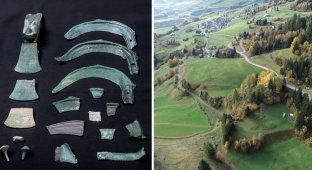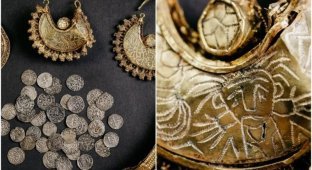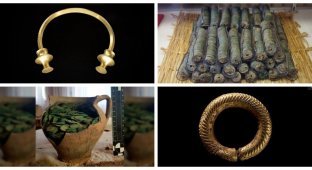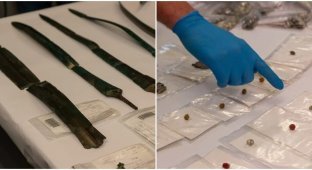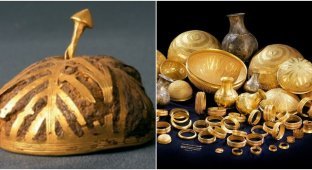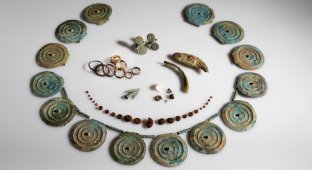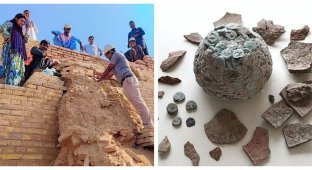How the famous “treasure from Carambolo” was found (8 photos)
In September 1958, in Spain, just a few kilometers from the large city of Seville, archaeologists made an amazing discovery, the origin of which scientists have debated for decades. During renovation work, builders came across an ancient ceramic vessel. They did not touch it and decided to wait until the called archaeologists arrived at the site. When the researchers removed the vessel from the ground, they were amazed by its contents. 
Gold jewelry from a treasure of the 6th century BC. found during repair work 3 kilometers from the city of Seville
Inside there was a lot of handmade gold jewelry, which was immediately sent to the laboratory for study and restoration. The so-called “Treasure of Carambolo” or “Treasure of El Carambolo” consists of 21 gold jewelry weighing a total of 2.7 kilograms. The treasure consisted of a complete necklace with pendants, a pair of gold bracelets, two breast ornaments and sixteen more gold plaques, which may have formed a necklace or even a tiara. The beauty of the jewelry was revealed after it was cleaned. It was incredibly delicate and filigree work. The ancient master who made them mastered various techniques of working with gold: filigree, soldering, granulating, enameling, thanks to which the products turned out not just magnificent, but magical. Experts believe that the treasure was hidden around the 6th century BC, but most of the jewelry, except for the necklace, dates back to the 8th century, that is, their age is more than 2800 years. For that time, such a level of skill was not just high, but rather a new level in jewelry. 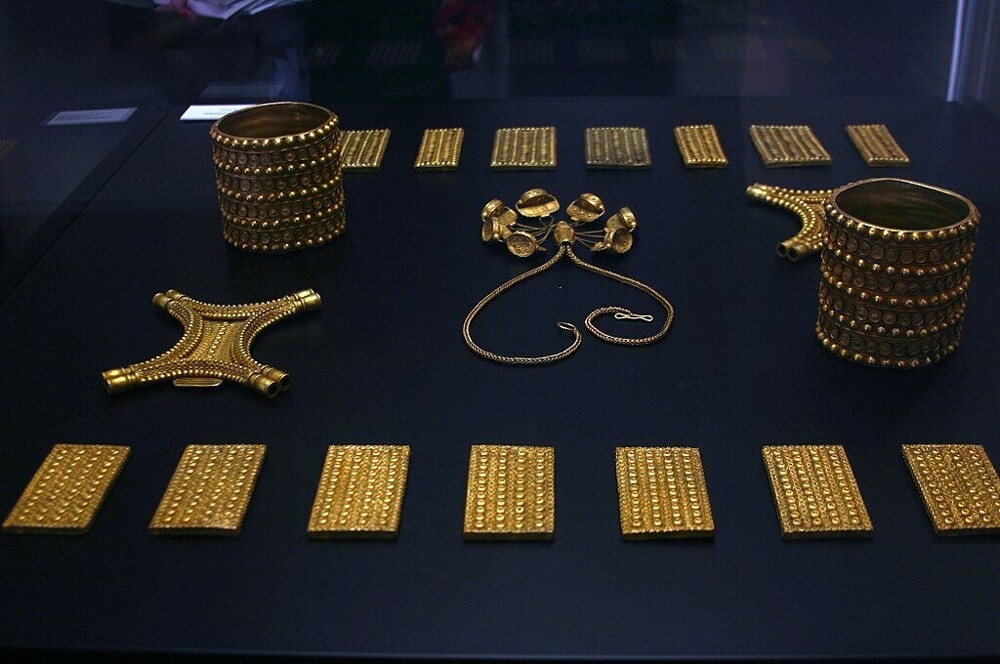

Gold jewelry from a treasure of the 6th century BC. found during repair work 3 kilometers from the city of Seville
In the 6th century BC. on this territory was located the ancient city of Tartessus, the capital of the Tartessian state. Until the mid-20th century, this state was considered mythical, despite the fact that mentions of it were found in the records of Herodotus, Avian and some other classical sources, but there was no direct evidence. This was also due to the fact that the power had very close ties with Greece, and especially with Phenicia - a large, strong and rich state that bordered the kingdom of Israel from the south, and Syria from the north and east. Since their connection with Tartessus was significant, for a long time scientists thought that this was all one state. However, in many ways both powers were similar, because the inhabitants of Tartessus adopted a lot from the Phoenicians. However, it is worth noting that they had their own writing system. Even now, little is known about Tartessus, not even who founded it. According to one version, these were the Etruscans who came here from Asia Minor, and according to another, several united local tribes. 
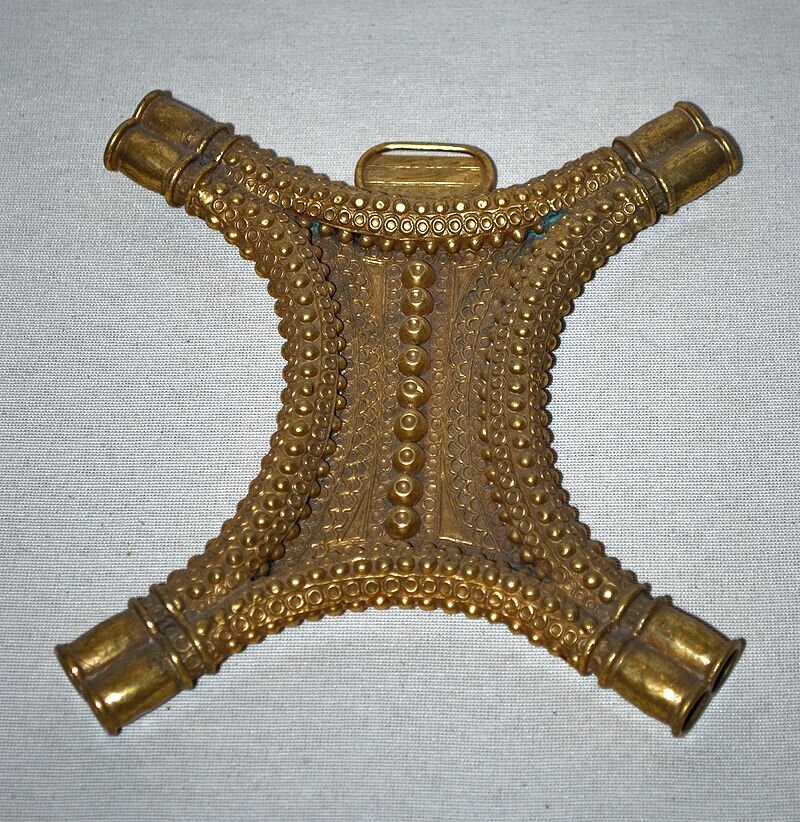
One of the chest decorations from the treasure "Treasure of El Carambolo" found in 1958
The treasure from Carambolo and some other material evidence discovered during excavations in the area finally made it possible to talk about Tartessus as a separate state. But the problem was different. At some point, the scientific community was split regarding its opinion of the treasure. The fact of a separate state was no longer discussed, but some experts argued that the treasures from the treasure were made and brought here by the Phoenicians. Other scientists were of the opposite opinion. But in 1958 there was no technology that we have now, so it was impossible to find out. The debate went on for 50 years. But relatively recently they finally ended. 

In 2017, a group of Spanish researchers from the University of Huelva carried out a series of very complex analyzes to determine exactly where the gold from which the jewelry was made was mined. Using mass spectrometry, archaeologists not only studied the composition of the metal, but literally decomposed it down to the number of lead isotopes in the alloy and foreign impurities, the amount of which is so small that their concentration did not exceed 10 to the minus 10 power. Researchers had previously tried to conduct similar analyzes to study the alloy in the 60s and 80s, but then their results could only tell a very approximate location. Modern research has finally dotted the i’s. According to the results of mass spectrometry, the gold was of local origin, which means that the jewelry was most likely made in the territory of Tartessos. 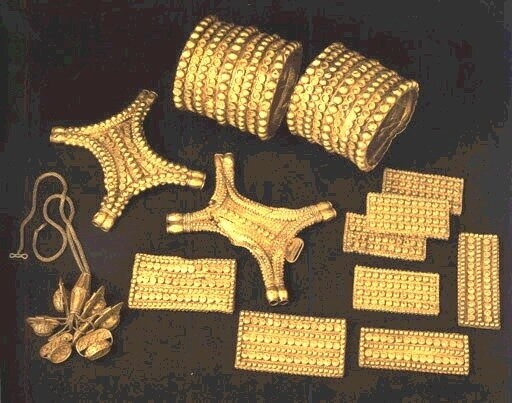
This work is an excellent example of the fact that after some 50 years, technology has become so advanced that we can now study something that seemed impossible just half a century ago.












